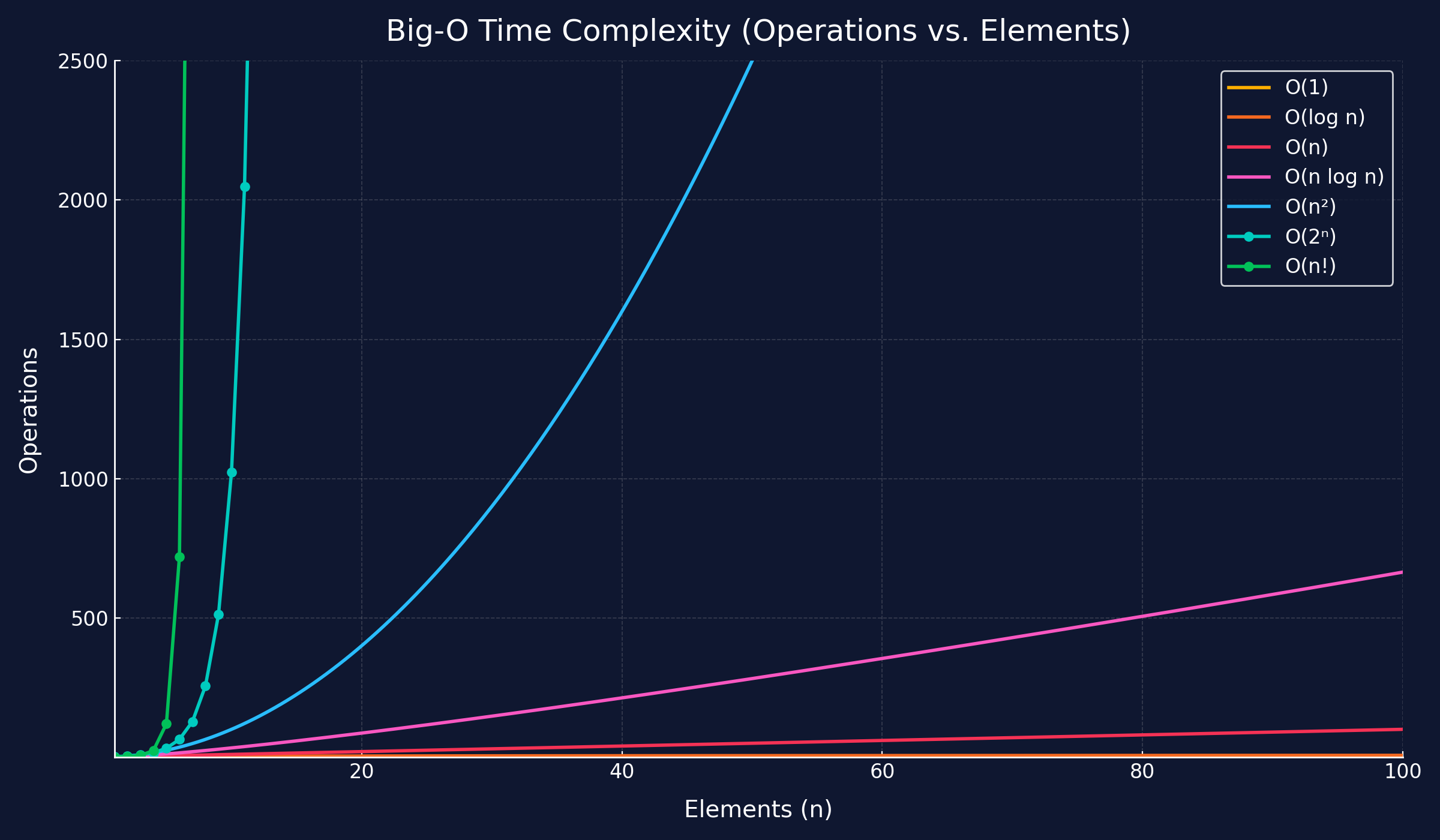Big-O Complexity Chart

Time complexity describes how an algorithm’s running time grows as the input size n increases. It’s hardware-independent and counts elementary operations (comparisons, moves, arithmetic, etc.).
O(n²) worst-case).Ω(1) if the key is first).Θ(n log n)).Note: Time Complexity measures growth with respect to input size, not the execution time.
t₂ = t₁ × f(n₂)/f(n₁)n₂ with f(n₂) = (t₂/t₁) · f(n₁)Powers: f(n)=n^k ⇒ n₂ = n₁ · (t₂/t₁)^{1/k}. Logs: f(n)=\log n ⇒ n₂ = n₁^{(t₂/t₁)}. For n\log n, solve numerically (the calculator below does that).

7n + 3 → O(n), n + n log n → O(n log n).| Recurrence | Solution | Appears in |
|---|---|---|
T(n)=T(n/2)+c | Θ(\log n) | Binary search |
T(n)=2T(n/2)+cn | Θ(n\log n) | Mergesort, FFT |
T(n)=T(n-1)+c | Θ(n) | Linear recursion |
T(n)=T(n-1)+n | Θ(n^2) | Triangular loops / insertion sort worst |
Example 1 — Quadratic scaling t₁ = 200 ms for n₁ = 1000, algorithm O(n²). t₂ = t₁ × (n₂² / n₁²). If n₂ = 3000 → t₂ = 200 × (3000/1000)² = 200 × 9 = 1800 ms. Example 2 — Logarithmic scaling t₁ = 200 ms for n₁ = 1000, algorithm O(log n). t₂ = t₁ × (log n₂ / log n₁). If t₂ = 1800 ms: 1800/200 = 9 = log n₂ / log 1000 ⇒ log n₂ = 27 ⇒ n₂ = 10²⁷.
| Notation | Name | Typical examples |
|---|---|---|
O(1) | Constant | Hash lookup (avg), stack push/pop |
O(log n) | Logarithmic | Binary search; balanced BST height |
O(n) | Linear | Single pass, two-pointer scan |
O(n log n) | Log-linear | Mergesort/Heapsort; many divide-and-conquer |
O(n^2) | Quadratic | Double loop; selection/bubble sort |
O(2^n) | Exponential | Enumerate all subsets |
O(n!) | Factorial | All permutations; naive TSP |
Both calculators assume the same constant factor/hardware between scenarios.